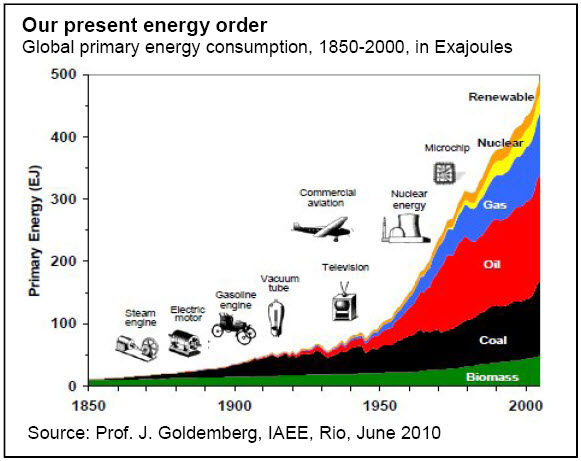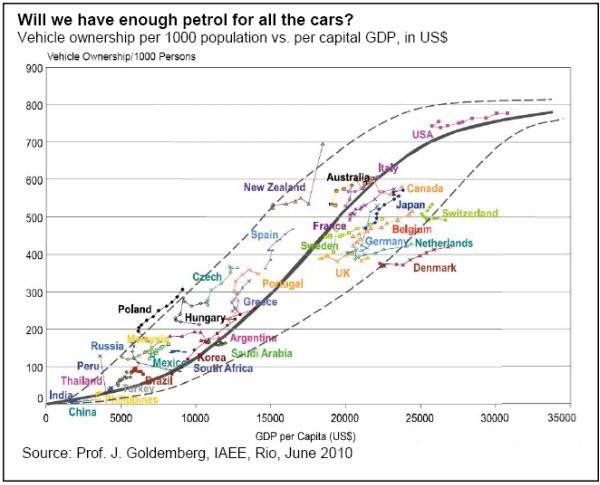This is a sample article from the July 2010 issue of EEnergy Informer.
Everyone asks how much more energy we’ll need, where it will come from, and at what cost? Are those the correct questions to ask?
For over 3 decades, the International Association for Energy Economics (IAEE) has been organizing annual events where participants discuss energy, economics and environmental issues. At these gatherings, energy economists spend a lot of time and effort to project how much more energy we are going to need, where are we going to get it, and at what cost? In recent times, more attention is being paid to environmental issues, including the impact of fossil fuel combustion on climate. Hardly anyone ever asks whether this state of affairs is sustainable? Or why should we take future demand growth as a given? Or can we continue to carry on as we have done in the past — digging, drilling and burning more fossil fuels as if there was no tomorrow?
At the latest conference in early June held in Rio de Janeiro, Brazil, Professor Jose Goldemberg deviated from the usual script with a keynote speech titled, “Why do we need a new energy order?” His main message was that our present energy system is not sustainable because it is highly inequitable, it is overly dependent on exhaustible fossil fuels, has serious geopolitical problems, it has detrimental effects on human health, and — yes — it is inexorably leading us to global warming.

Professor Goldemberg recommended a 3 pronged approach to address these problems: increasing energy access for those who do not currently have it, switching to biofuels — after all the conference was held in Brazil — and increasing reliance on renewable resources in electricity generation, all sensible things to do.
While few can fault Professor Goldemberg’s excellent assessment of the problem or his prognosis to address it, there may be a more fundamental question that goes to the core of today’s energy problem, and that is why do we need so much energy to begin with, and what do we use it for? Looking at the first accompanying graph, it is clear that we have been on an exponential growth with no end in sight. The second graph, explains what everyone intuitively knows, namely as nations become more affluent, they demand more energy services, be it mobility, heat, lighting, cooling — you name it. The graph, of course, shows what happens to demand for mobility as GDP grows.

But as Professor Goldemberg acknowledged, the key question that is frequently left out of the equation is how can we provide an adequate standard of living for the world at large on a frugal energy and carbon footprint? How can we meet the demand for energy services that drive the demand for energy by doing things differently — and perhaps not doing them at all?
I recall a comparison of energy associated with sending a document via an express courier across the globe as opposed to faxing the same document, with significant energy savings in the latter case. That was many years ago when fax was a relatively new technology. Today, the same document can be zipped at the speed of light via the Internet. Who needs the FedEx or for that matter the fax machine?
Countless examples like this suggest that we can, and should, do a lot more with a lot less. And the sooner we start questioning why we use so much energy, and why we will need even more of it in the future, the closer we get to finding our way to a new energy order.

